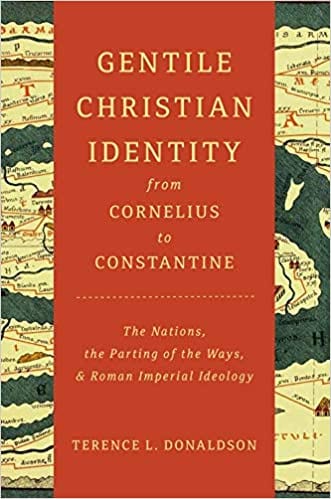Q. How, if at all, does this affect one’s views of the Scripture as inspired by God?
A. I don’t have much to say here about inspiration itself; at least, this is not where I would want to begin. For me, the term is too bound up with approaches that begin with a preconceived idea of what scripture should look like, which then functions as a procrustean bed into which the actual scriptures as we have them are forced to fit. Such approaches, which all too often end up defending scripture against itself, leave me cold. Let me hasten to add that I’m not objecting to your question or laying any of this to your account. Still, whatever I would have to say about inspiration—how it is that God speaks in or through scripture—would begin with the phenomenon of the scriptures themselves—how they came to be and how they have functioned, and continue to function, as instruments of community formation. I suppose my approach, which draws on work pertaining to the social construction of reality and emphasizes the narrative character of scripture, could be aligned with a mood or theological movement sometimes described as “post-liberal.”
Some of what I have to say about how the New Testament came to be is present in chapter 4 of the book. As I see things, the early Christian writings that eventually came to be included in the New Testament are the product of a process of social-world construction that can be seen as operating at three levels. The primary level consists of a set of fundamental beliefs or convictions having to do with the resurrection of Jesus and its significance. One can quibble about how to summarize this, but at the heart of it, I would say, was the conviction that God had raised Jesus from death and thus had identified him as messiah, the one through whom the promises of the prophets and the hopes of Israel would be brought to fulfillment.
This set of convictions, however, raised as many questions as it answered. If the life, death and resurrection of Jesus is to be seen as the culmination or fulfillment of Israel’s story, it represented an unexpected ending, a surprise twist that required considerable rereading of the story to that point if it were to make sense. In other words, the new set of convictions set in motion a process of theological explication. In chapter 4, I identify four question clusters that the early Christ-believers needed to wrestle with if a habitable world of meaning were to be constructed on the basis of the foundational set of convictions: (i) Who is Jesus, that his life, death and resurrection should have such far-reaching consequences? (ii) How is it that the life, death and resurrection of the messiah should bring salvation? What is the problem for which this is the divinely provided solution? (iii) What is the nature of the present period (between the resurrection of the messiah and the parousia) and how is it related to the past (the story of Israel) and the future (the full establishment of God’s reign with the parousia of the messiah)? (iv) What is the relationship between the new people of the messiah and the original people of Israel, on one hand, and the larger world of the gentiles, on the other? Answers to these questions were by no means self-evident. Various answers were proposed and advocated all along the line, which means that this level was characterized by a certain measure of both diversity and development.
The third level had to do with the contingent realities of the ongoing life of the Christ-groups or churches. Life happened; unexpected problems emerged; conflicts had to be resolved; community norms needed to be articulated or defended. At this level, we see various attempts to deal with contingent realities in light of fundamental convictions, which also had the effect of stimulating theological development from the other side.
It was in the process of this three-level enterprise of social-world construction that things came to be written, in various forms—epistle, treatise, gospel, history, apocalypse. Each of them reflects these three levels in differing proportions—articulating and proclaiming the basic convictions (gospel); wrestling with theological implications of these convictions; dealing with the contingent circumstances of living communities. Eventually a number of these writings from the foundational generations of the church were accepted as best representing the literary legacy of the church in its foundational apostolic era.
Well, this is perhaps getting too long and complicated to serve as a helpful response to your questions, so let me try to move quickly to a conclusion.













